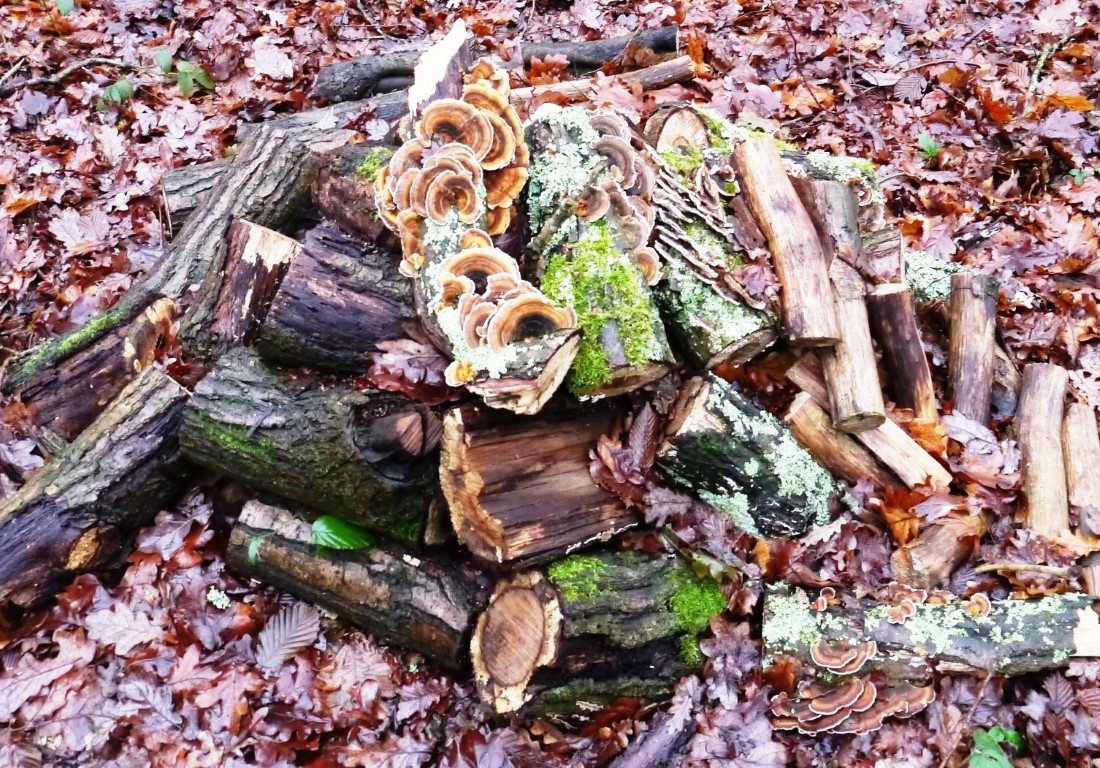
Total monthly rainfall in December amounted to 118.5 mm with a maximum daily rainfall of 26mm on the 27th. The maximum temperature on the hottest day of the month (30th) reached 13°C whilst the coldest day (11th) was only 3°C. The welcome rainfall for this month brought our total annual rainfall to 595.5 millimetres, the lowest total since 2011, and well below our ten-year running average of 759 millimetres.
-
 new young honeysuckle leaves appearing
new young honeysuckle leaves appearing
new young honeysuckle leaves appearing
new young honeysuckle leaves appearing
-
 severe grey squirrel damage to honeysuckle plants
severe grey squirrel damage to honeysuckle plants
severe grey squirrel damage to honeysuckle plants
severe grey squirrel damage to honeysuckle plants
-
 a dead oak tree which had become a woodpecker larder
a dead oak tree which had become a woodpecker larder
a dead oak tree which had become a woodpecker larder
a dead oak tree which had become a woodpecker larder
-
 colourful fungi on an overlooked log-pile
colourful fungi on an overlooked log-pile
colourful fungi on an overlooked log-pile
colourful fungi on an overlooked log-pile
https://kentfieldclub.org.uk/index.php?view=article&catid=23%3Alittle-barton-farm-wildlife-notes-&id=86%3Adecember-2017&tmpl=component&print=1&layout=default&page=&option=com_content&Itemid=22#sigProIde237ac7885
Surprisingly we saw no moon between December 12th and the 25th (14 nights) despite stars being visible on several of those nights. During that time, thin ice formed across our lake on the 15th, 17th, and 19th, each time more-or-less thawing on the following days.
December is often a somewhat uneventful month for flora and fauna. Of the wildflowers blooming into this month, the sow thistle was seen until the 2nd, common daisy the 3rd, and dandelion the 4th. The oxeye daisy survived into the 23rd – leaving one tall melilot to last until the 30th and several red deadnettle to continue into 2018.
Creatures still active during December were the woodmouse beneath a reptile shelter on the 6th; seven winter moths flying in the woods at dusk on the 23rd; a common shrew under another reptile shelter on the 24th; and, on the warmest day of the month, a great crested newt beneath a reptile shelter near our woodland pond on the 30th December.
Two first-sightings appeared towards the end of the month. We noticed new young honeysuckle leaves appearing on the 21st, and a determined cormorant attempted to fish our lake while we were walking the dogs, but eventually decided to try a more peaceful site!
Finally, on the 21st December we ventured off the “beaten track” in our woodland to discover severe grey squirrel damage to several honeysuckle plants. We hope this does not adversely affect our white admiral butterfly population in the coming year. We also spotted a dead oak tree which had become a “woodpecker larder”, and some colourful fungi on an overlooked log-pile (see pictures).